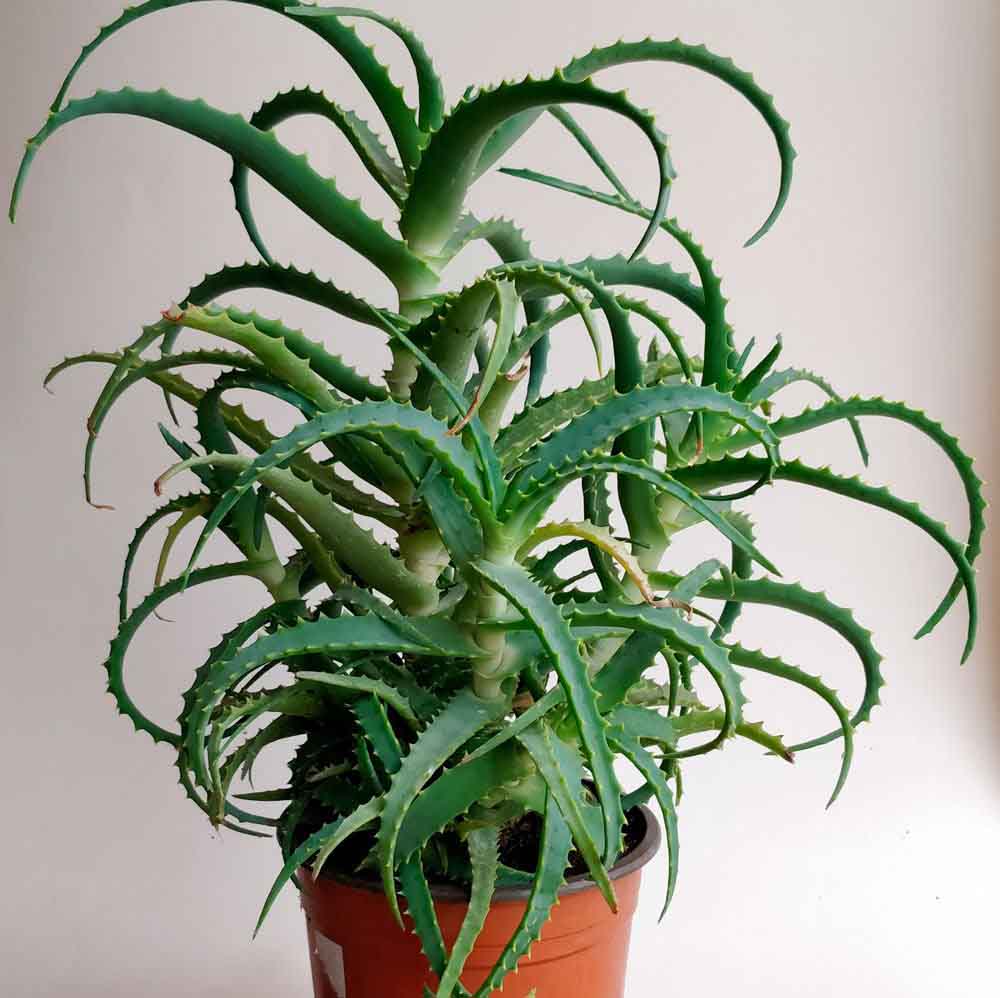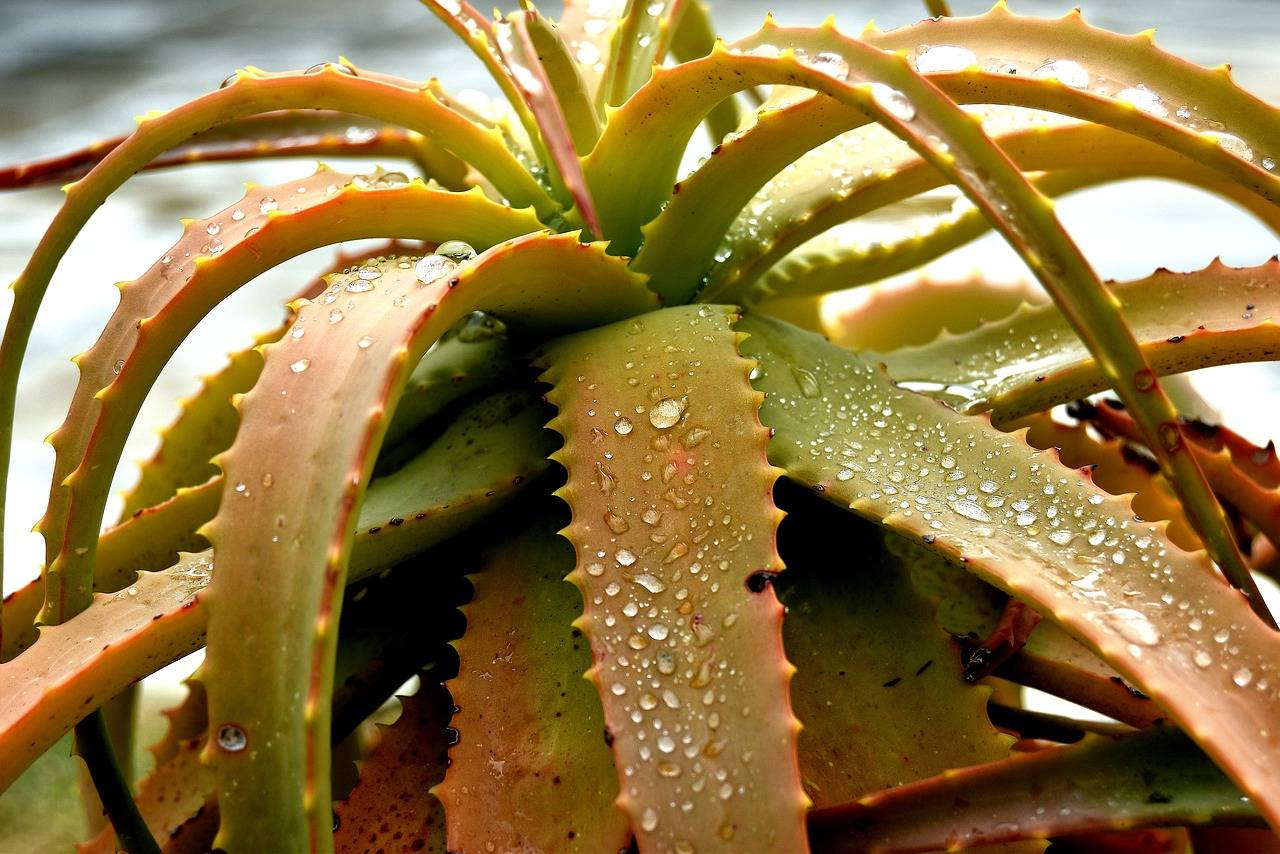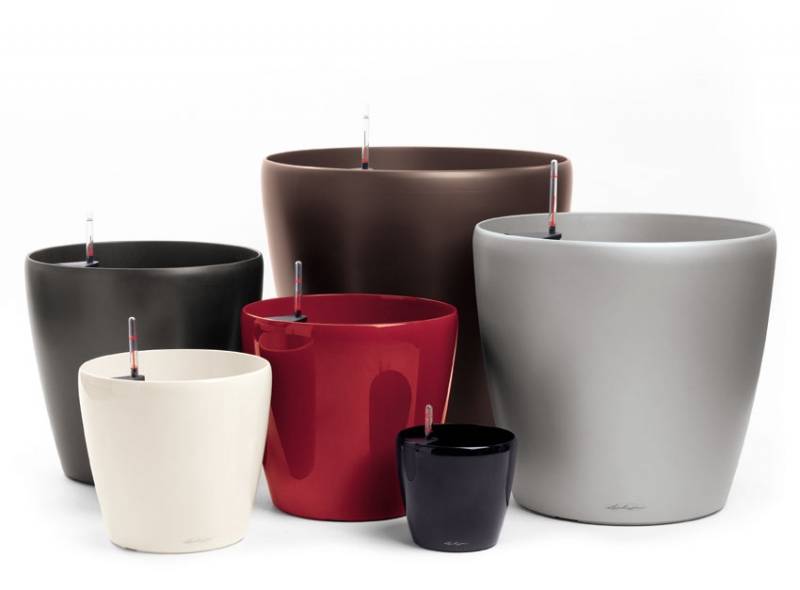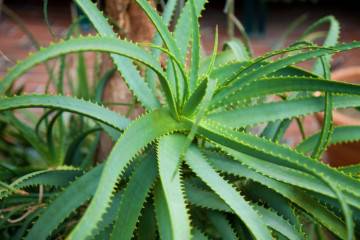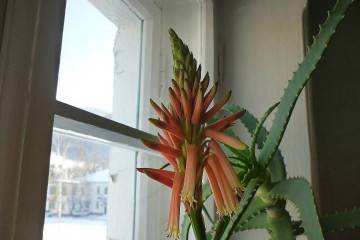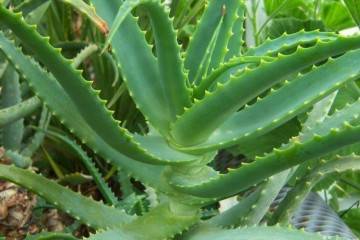How to transplant aloe at home yourself
Content:
Aloe vera is a tree-like plant that many grow at home. Succulent is unpretentious in care, it grows very quickly in almost any conditions. How to transplant aloe is not difficult to figure out. There are many methods of breeding this plant.
What is aloe plant and why transplant it
Transplanting indoor aloe is a must-have care measure. This helps to maintain the vitality of the old plant, so the timing must be met exactly.
A succulent cuttings with strong roots need space. Due to the overgrowth, cultivation becomes a difficult task, the flower must be created comfort. Development and further growth is impossible without this aspect. Such conditions can be provided through transplantation.
In the course of growth, shoots appear in the container. If there are many roots, the children must be seated in another container. Otherwise, they will snatch nutrients from the mother. The soil in the container will be depleted, the development of both children and an adult aloe will slow down. Correct development will be disturbed, attractiveness will be lost.
The habitat of the aloe must be changed as the roots grow. Otherwise, the roots can occupy the drainage holes, it will be difficult to remove the flower from the pot. The powerful root system of aloe needs nutritious soil. Without a transplant at home, aloe will not receive additional nutrition. For example, minerals, vitamins and other components important for development. An overabundance of nitrogenous substances turns out. The soil turns into stony dust over time. The moisture supply to the roots is limited.
Sometimes aloe needs a very urgent transplant. For example, rotting is observed with excessive watering. Perennial is affected by various ailments, but most often in winter, in February. If the agave is bought in a store, you need to know how to transplant the aloe into another pot. The store substrate is not suitable for growing a houseplant.
How often can you transplant at home
When growing indoor flowers, it is worth remembering the need for transplanting, the procedure is very desirable. For example, it is important to know how to transplant aloe after purchase. Since the flower is stored in the store, it is usually in a very small pot, which is designed for a temporary stay. At home, you need to choose a more suitable container.
A transplant is necessary when the flower has outgrown its capacity and needs new spaces. Often such a procedure is planned, carried out when the aloe roots look out of the drainage holes. The lack of nutrients in this case leads to the cessation of development. The flower is susceptible to attacks by pests and diseases.
Regular homemade aloe needs an annual transplant. The procedure should be repeated until the flower reaches five years of age.
This is due to a slowdown in the growth of an adult specimen.A transplant is enough for such a plant once every three years. The root system of a young plant is fast-growing and requires more space over time.
When is the best time to do it
Despite all the positive qualities of the transplant, it is not recommended too often. If the procedure is untimely, the plant will recover for a long time. Transplanting a plant without important reasons leads to a deterioration in immunity, sometimes it can destroy aloe.
The best time for the process is spring and summer. During the season, the plant has an active growing season. Transplant stress will be less noticeable in late March and early May.
At this time, the vital forces are activated. Transplant injuries heal faster. The revitalization of vitality helps, even if the procedure is unscheduled.
Do not transplant homemade aloe in winter. This period is considered a state of rest. The root system will take longer to recover.
Also, you should not transplant aloe that has had an infection. For example, a plant recovers for a long time after being damaged by harmful insects. To prevent the flower from dying, you need to wait time.
Plant preparation for transplanting
Taking into account the need for transplanting, it is important to prepare the plant for the process. For example, you need to choose a suitable pot, the diameter of which should be larger than the previous one. Tight cookware will slow down the growth of the aloe. An ideal pot should be 1.5 times the size of the previous one.
If you prepare the soil yourself, you can take coarse sand and leafy earth in equal proportions, adding charcoal to the mixture. To keep the flower in the pot, it is necessary to pour drainage on the bottom. At first, aloe needs feeding. For these purposes, a special mixture for succulents is suitable.
How to transplant an adult plant into another pot
The work associated with aloe transplant is easier to divide into several stages. For example:
- Stop watering the flower one day before the event.
- If diseases are observed in aloe, it is better to free the flower from the old earth altogether. Rinse the root system, cut off the old roots.
- Laying out the drain at the bottom of the container is a prerequisite. Add soil on top.
- Place the plant in the center of the pot, observing the condition of the roots. The stem of the flower should be just below the edge of the pot.
- Cover the roots with earth, ensuring uniformity. Tamp each next layer a little.
Watering after transplanting should be rooted.
What kind of pot is needed
Home plant pots surprise with their variety. The shapes, textures and colors are very diverse, what kind of pot is needed for aloe is sometimes incomprehensible. The container affects the external characteristics of the plant, therefore the stage is one of the most important.
Aloe is enduring, but a lot depends on the right pot. For example, a flower pot is a decorative vessel without a pallet. The accessory is smart in itself, so it hides the unattractiveness of the succulent.
For aloe roots, it is important to allow for sufficient space. However, you should not initially choose a large pot. After all, in the future, an even larger container will be needed. Dark pots should not be considered as they bask in the sun. Rectangular containers are considered not very useful. In the corners, water accumulates in them, mold appears, ventilation deteriorates.
When alternative to a particular container, it is necessary to take into account the material of the pot. Most houseplants do well in ceramic crockery. Planters of this type are not only beautiful, but also environmentally friendly. Ceramics are characterized by the presence of pores through which oxygen penetrates inside. Thanks to this uniqueness of the material, a high-quality climate is maintained inside. A ceramic pot is indispensable for plants that do not tolerate waterlogging. Aloe is just such.
Land requirements
Aloe grows in nature in places where it is very hot, and there is a minimum of rain. In the room, the cactus species prefers a loose soil substance. It is important that breathability is present. The land should be well-drained.
If the plant does not like the selected soil, the flower will react accordingly. For example, yellowing and early death of aloe will begin. To prevent this, it is better to choose soil with a slightly acidic pH, up to 7 units.
Baking powder required:
- gravel chips;
- perlite mixture;
- vermiculite mixture;
- crumb of bricks;
- small coals.
Basic ingredients of the mixture:
- turf;
- ordinary land;
- sandy ground;
- fresh humus.
Aloe transplant without roots
The growth of aloe without roots is a real phenomenon, although the method is not very popular. The method has positive qualities:
- The individual will receive the attributes of his parent.
- A rooted specimen quickly acquires children.
- Planting is possible at any time - in winter and summer.
For the success of the event, a leaflet for planting must be prepared. Cut off the leaf at the base and with a sharp knife. Immediately treat the cut site with tableted charcoal, then leave to dry.
Place the processed leaf in water. Wait for the roots to appear and lay the planting material on a clean cloth.
Post-transplant care
Aloe - although not demanding, but requires appropriate care measures. The dominant rate is related to the watering order. Waterlessness for this cactus is a better option than a generous overflow. In a raw container, the greens will begin to rot.
How to water, lighting and temperature
For the plant, a weekly sprinkling is sufficient, provided that the specimen is not very old. For an adult cactus, the frequency of sprinkling should be infrequent. An adult specimen can be watered twice a month in the summer, once every 40 days in the winter, and once every thirty days in the fall.
Lighting for the agave should be intense. For aloe, a southern sill is recommended. With a lack of light, the leaves of the plant bend, the bush itself grows uneven.
The temperature regime for aloe can be fully regulated - 12-30 degrees. In the summer months, it is good to move the plant to a street flower bed or to an unglazed loggia. Indoors, it is important to regulate the amount of watering depending on the temperature. The warmer, the more water the cactus will need.
Aloe is a cactus species that occurs naturally in a variety of forms. Only about 500 different plants grow in Africa and also not in the Arabian Peninsula. The common Russian name for Aloe is agave. The medicinal properties of this plant were known more than three thousand years ago. For example, the plant is widely recommended in gastroenterology, ophthalmology, for long-healing wounds and ulcers.


